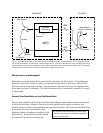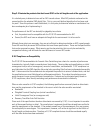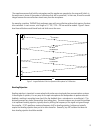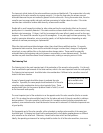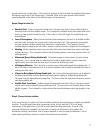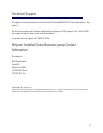
frequently, if at all. With acoustic echo cancellation, the echo path is very complex (dozens or hundreds of
reflections), lasts 100-200 ms, and can vary continuously during a conversation as people move around the
room. Acoustic echo cancellers are therefore much more complicated devices. While line echo cancellers
may have smaller price tags, they can’t perform under the conditions that acoustic echo cancellers can
handle.
Steps to Choosing An AEC
Now that the need for an acoustic echo canceller is recognized, the best AEC solution for the application
isdetermined based on the following four step selection process.
• Find AEC products with the features and form factor needed for the application. There may
be several acceptable form factors. Even if one seems particularly suited to the application, consider
all of them for a broad selection of price and performance.
• Eliminate products that don’t meet G.167 or the tail length requirements of the application.
Although these two factors are necessary, they are not sufficient. However, if an AEC solution does
not meet these requirements, it will most likely not sound very good at all, so don’t waste time
arranging listening tests. If it does meet these requirements, further testing and evaluation should be
done to ensure that it is appropriate for the application. When possible, find out the testing
environment as well as the results of the G.167 testing.
• Judge audio quality and state machine performance by comparative listening. A panel of
several people should listen to the different solutions (preferably the same people, under similar
conditions, during a short time span). They should listen for the common problems echo cancellers may
have, as well as overall quality.
• Choose the best solution. Weigh the performance, price, and convenience of each solution, and
choose the one that will work best in the application.
Step 1: Find AEC solutions with the features and form factor needed for the application.
Features
Certain features may be desirable for certain applications. For example, wide-bandwidth may be a
necessity for videoconferencing or high quality audio conferencing systems. For integrated systems, the
number and quality of microphones and speakers will be an issue. Automatic control of microphone and
speaker levels may be desirable. A graphical user interface (perhaps through a connection to a Windows
machine) may be needed. These kinds of features are too varied to be discussed in detail in this paper, but
will certainly be a consideration in the selection of an echo cancellation solution.
4





